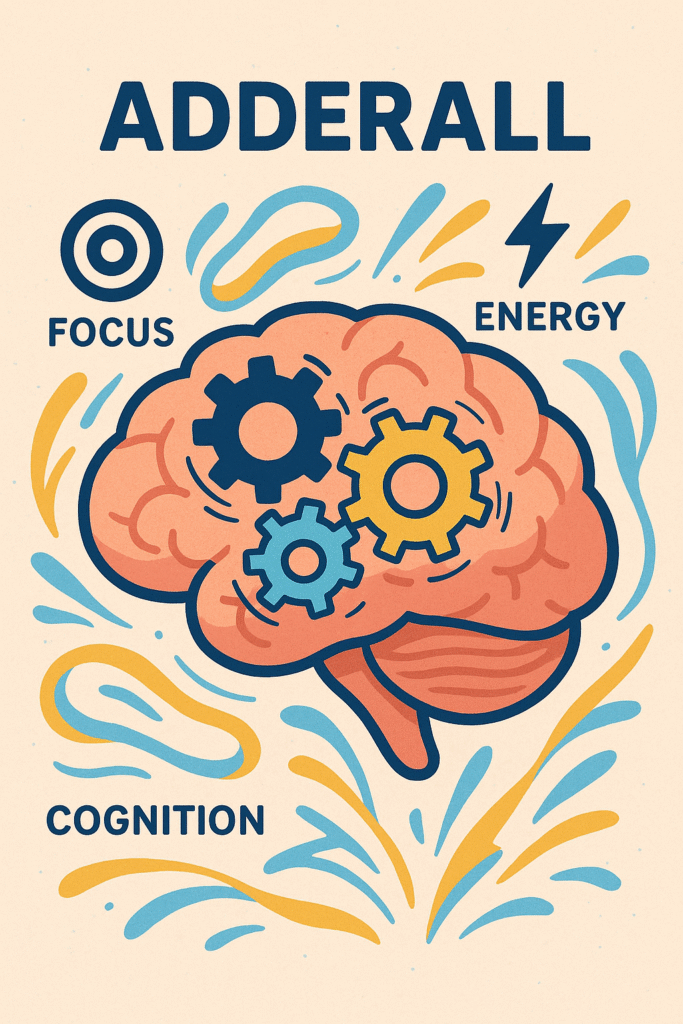Your cart is currently empty!
For as long as I can remember, my days were a chaotic mix of lost keys, missed appointments, and half-finished projects. Living with ADHD wasn’t just about being “distracted” — it was about constantly feeling like my brain was tuned to a different frequency than the rest of the world. I knew something had to change when even the simplest tasks started to feel overwhelming.
That change came in the form of a small pill: Adderall.

The Before: A Life in Disarray
Before Adderall, mornings were my personal battleground. Waking up on time was rare, and when I did manage it, I’d spend the next hour bouncing between tasks — making coffee, checking emails, starting the laundry — but finishing none of them. My to-do list was more of a guilt list, a reminder of everything I had planned but never got around to.
Focus wasn’t just elusive; it felt impossible. Even when I wanted to concentrate, my mind would jump from one thought to the next with no warning. I was always exhausted, not physically, but mentally — from trying to keep up with a brain that never slowed down.
The Turning Point
After talking with my doctor and going through a thorough evaluation, I was diagnosed with ADHD — something that finally put a name to the struggle. We discussed treatment options, and Adderall was the one we landed on. I was nervous. I had read stories — both good and bad — but I decided to trust the process and give it a try.
The After: Structure from the Storm
The change didn’t happen overnight, but it was noticeable within the first week. Adderall didn’t make me feel “high” or over-stimulated — instead, it felt like someone had finally turned down the static. I could hear my own thoughts clearly for the first time in years.
My mornings started to look different. I could wake up, make coffee, and actually sit down to drink it without bouncing between five different distractions. times before — and stuck with it because I could actually stay with a thought long enough to write it down.
Work was another massive shift. Tasks that used to take hours now took half the time. I could finish emails, focus in meetings, and plan out my week without getting completely derailed. I didn’t become a productivity machine, but I became more me — the version of myself I always felt was hidden under the chaos.
The Caveats
Adderall isn’t a magic fix. I also learned quickly that the medication works best when paired with healthy habits: regular meals, consistent sleep, and breaks during long work sessions.
It’s also not a one-size-fits-all solution. I’ve met others with ADHD who found better success with different medications or non-medication strategies. The key is finding what works for you — and being patient while you do.
Moving Forward
Today, my routine isn’t perfect, but it’s mine. I still have off days. I still lose my keys sometimes. But now, I have the tools to recover quicker, to bring myself back on track without spiraling.
Adderall didn’t change who I am. It helped reveal who I’ve always been — someone capable of focus, structure, and growth. For the first time in a long time, I feel like I’m steering the ship instead of just trying not to sink.
If you’re navigating ADHD and considering treatment, know that you’re not alone — and that change is possible. It might not come instantly, and it might take some trial and error, but with the right support, life can feel less like a storm and more like a journey you’re finally able to map.
Leave a Reply